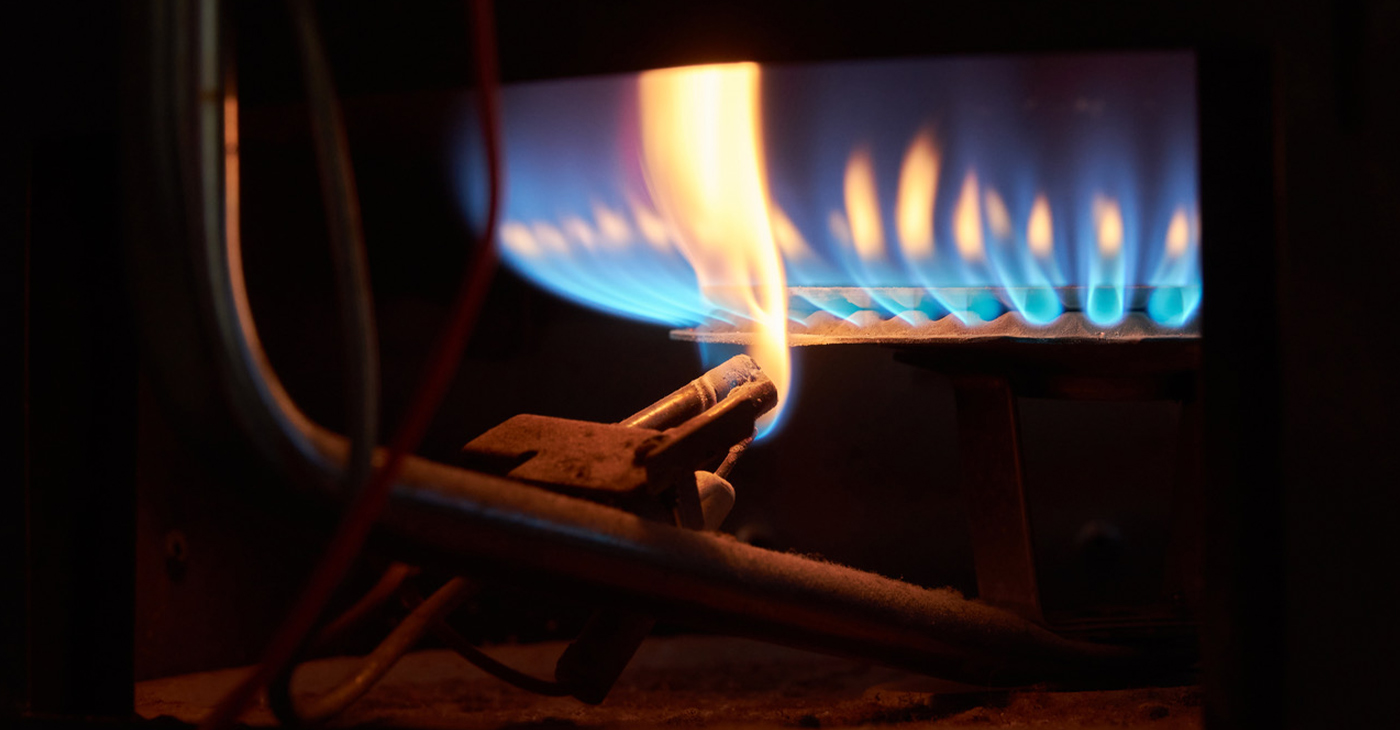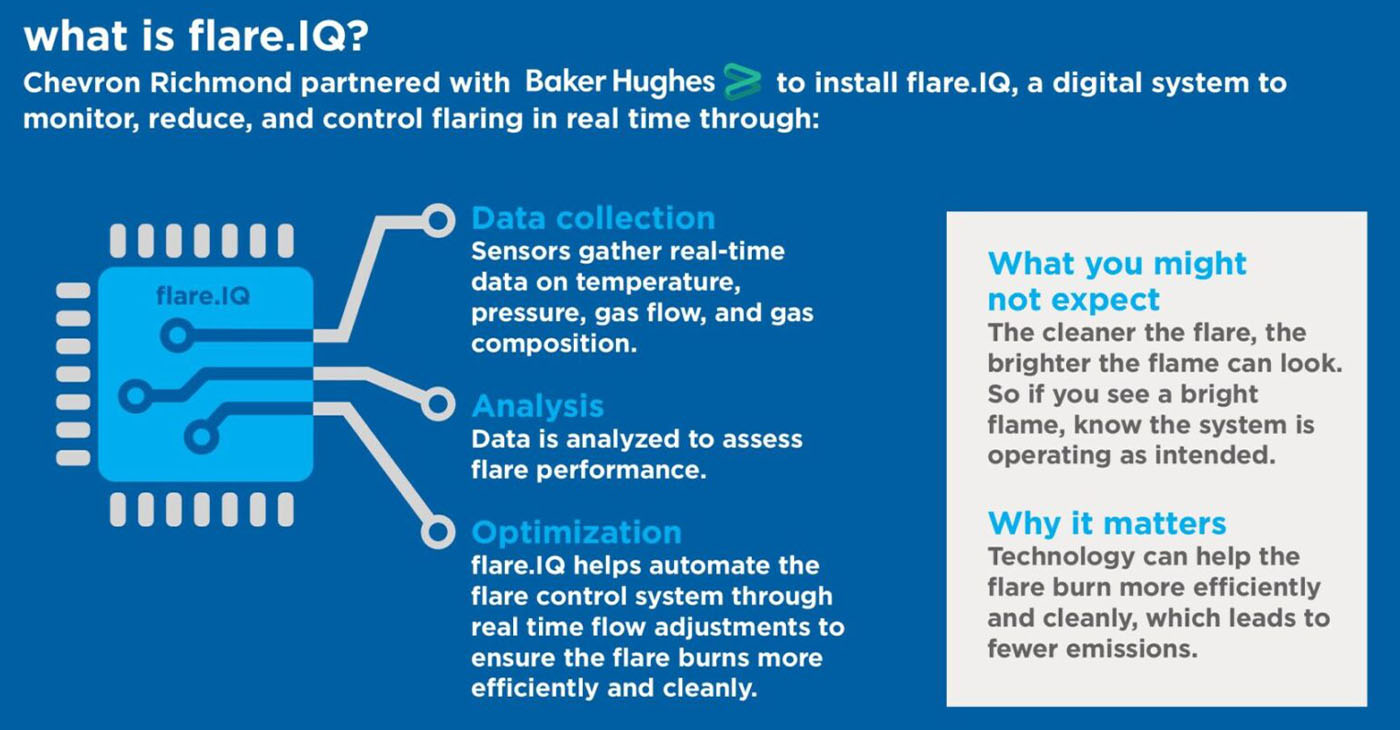Energy
PRESS ROOM: New Report Shows Robust Natural Gas and Oil Industry Commitment to Workplace Safety
NNPA NEWSWIRE — “Safety has always been paramount to the natural gas and oil industry. As this report demonstrates, the industry’s leading workplace safety record reflects our commitment to safe and healthy working environments,” said Debra Phillips, vice president of API Global Industry Services (GIS).
Employees of the natural gas and oil industry experience injuries and illnesses at a rate substantially below the U.S. private sector due to industry practices and commitment to safety
WASHINGTON – API today released its comprehensive Workplace Safety Report showing that occupational injuries and illness for the natural gas and oil industry occur at a substantially lower rate than the U.S. private sector and are continuing to decline.
“Safety has always been paramount to the natural gas and oil industry. As this report demonstrates, the industry’s leading workplace safety record reflects our commitment to safe and healthy working environments,” said Debra Phillips, vice president of API Global Industry Services (GIS). “With strong industry leadership, we continue to enhance our approach to training, prevention and continuous improvement – incorporating advanced technologies, materials and practices as we strive toward our industry-wide goal of zero incidents.”
Industry’s safety initiatives are recognized by the chief authorities on safety, including the U.S. Occupational Safety and Health Administration (OSHA), which has incorporated a number of API’s recommended practices for workplace safety into the agency’s own standards. The Workplace Safety Report compares the safety rates of job-related nonfatal injuries and illnesses of the U.S. natural gas and oil industry with comparable U.S. industries. Information in the report is from the U.S. Bureau of Labor Statistics Survey of Occupational Injuries and Illnesses (SOII) the Bureau of Safety and Environmental Enforcement and the Pipeline Hazardous Materials Safety Administration.
Data from the Workplace Safety Report includes:
- The 2017 industry rate of job-related nonfatal injuries and illnesses was 1.7 incidents per 100 full-time workers versus 2.8 incidents for the U.S. private sector.
- The industry’s incidence rate has decreased by 41 percent since 2008. The private sector’s rate decreased by 28 percent since 2008.
- The 2017 incidence rate for exploration and production was 1.1 (offshore was 0.6) per 100 full-time workers compared to 1.5 for U.S. mining sector.
- Pipeline infrastructure is an extremely safe way to transport natural gas and oil products. The pipeline rate rounds to 0.0 for almost every year, including 2017, compared to the 2017 rate of 4.6 for all of U.S. transportation and warehousing.
In addition to releasing its report, API was proud to partner with the U.S. Occupational Safety and Health Administration (OSHA) for “Safe+Sound Week” a nationwide event in August of 2018 to raise awareness and understanding of the importance of safety and health programs. This includes management leadership, worker participation and a systematic approach to finding and fixing hazards in workplaces. API also published a handbook, “Rules to Live By,” that contains fundamental safety reminders for workers and employers. Each page of the handbook may be printed as a poster to remind workers of important safety tips while doing things such as working at heights, implementing stop work authority or driving safely.
API is the only national trade association representing all facets of the natural gas and oil industry, which supports 10.3 million U.S. jobs and nearly 8 percent of the U.S. economy. API’s more than 600 members include large integrated companies, as well as exploration and production, refining, marketing, pipeline, and marine businesses, and service and supply firms. They provide most of the nation’s energy and are backed by a growing grassroots movement of more than 47 million Americans.
Activism
Richmond Community Leaders Advocate for Accountability and Equity in Chevron Settlement Funds
“Now is the time for our community to have funding to solve the many problems that have been created over time,” said community advocate Antwon Cloird. “We now have no time to see politicians and the system get paid, while our community, year after year gets played.”

By Carla Thomas
Richmond’s historic $550 million settlement with Chevron is considered a major victory by local officials, environmental justice advocates, and union representatives to remedy the harm caused by the refinery’s long-term air pollution in the city.
However, still unresolved is how the money will be allocated to reach community members who need the most support.
“Now is the time for our community to have funding to solve the many problems that have been created over time,” said community advocate Antwon Cloird. “We now have no time to see politicians and the system get paid, while our community, year after year gets played.”
Cloird says he has formed a new coalition of 25 long-term residents who are all professionals and contributors to the community. Along with his newly formed group, which held a meeting at CoBiz, he demands transparency, equity, and fairness in the distribution of the settlement funds.
Cloird says the city wants to hire a consultant for $1.5 million to assess the Black community’s needs.
But Cloird says Black communities in Richmond have undergone so many rounds of gentrification abuse that an assessment is wasted money and time on reparations that can be more clearly defined by community members.
Cloird is outraged by the City of Richmond’s history of harm toward its Black community. Since the 1980s, the community has suffered from racism, redlining, gentrification, and marginalization, he said, arguing that the manipulation of the city’s finances has sidelined the Black community for too long.
Cloird’s career and life experiences have led him to share how the Crack Epidemic, the prison to pipeline syndrome, and the many ways systemic racism has forced an outmigration of the City’s Black community to the more northern suburbs of Pittsburgh and Antioch, which are connected to the mismanagement of city funds and the marginalization of several Black neighborhoods in Richmond.
Mayor Eduardo Martinez has proposed plans to rectify city finances and expand public services. He says the money will be placed into the city’s general fund and be allocated through open budget meetings, with public participation.
Council members Claudia Jimenez, Doria Robinson, and Sue Wilson support using the settlement to transform the city’s finances and redirect millions in annual pension payments toward services like safety, road repairs, and staffing.
Local advocacy groups, including the Asian Pacific Environmental Network (APEN) and Communities for a Better Environment (CBE), had rallied for the now-rescinded “Make Polluters Pay” measure, but are now focusing on environmental justice and investment in community-led programs.
At present, residents and organizers remain cautious, wanting to ensure the funds are fairly allocated while Richmond faces a delicate balance of supporting those who have suffered most from the impacts of refinery pollution.
Cloird says he does not trust the proposed plans to direct the money into the general fund.
“There has been a pattern of money not reaching the communities that have suffered the most when money goes into the general fund. Our coalition will fight for our community, and I want ensure we will have a viable community moving forward.”
The $550 million settlement with Chevron Corporation ended a high-profile campaign to impose new taxes on the oil giant’s local refinery. Approved by the Richmond City Council in August 2024, the agreement provides the city with a decade of financial installments, starting in July 2025.
The settlement emerged after a grassroots campaign demanded stronger accountability from Chevron for decades of air pollution linked to increased health risks in Richmond. The 2900-acre Chevron refinery, which processes approximately 240,000 barrels of crude oil daily, has long faced criticism from residents for contributing to elevated rates of respiratory illnesses and cardiovascular disease.
In response, local advocates and city leaders moved forward with a proposed “Make Polluters Pay” ballot measure that would have set a new tax of $1 per barrel of oil refined in the facility. The measure aimed to raise funds directly from Chevron to address public health, infrastructure, and environmental concerns.
To avoid the proposed tax, Chevron agreed to a $550 million payout over the next decade. Chevron will deliver $50 million annually from July 1, 2025, through June 30, 2030, and $60 million annually from July 1, 2030, through June 30, 2035.
Antonio Ray Harvey
Air Quality Board Rejects Two Rules Written to Ban Gas Water Heaters and Furnaces
The proposal would have affected 17 million residents in Southern California, requiring businesses, homeowners, and renters to convert to electric units. “We’ve gone through six months, and we’ve made a decision today,” said SCAQMD board member Carlos Rodriguez. “It’s time to move forward with what’s next on our policy agenda.”

By Antonio Ray Harvey
California Black Media
Two proposed rules to eliminate the usage of gas water heaters and furnaces by the South Coast Air Quality Management District (SCAQMD) in Southern California were rejected by the Governing Board on June 6.
Energy policy analysts say the board’s decision has broader implications for the state.
With a 7-5 vote, the board decided not to amend Rules 1111 and 1121 at the meeting held in Diamond Bar in L.A. County.
The proposal would have affected 17 million residents in Southern California, requiring businesses, homeowners, and renters to convert to electric units.
“We’ve gone through six months, and we’ve made a decision today,” said SCAQMD board member Carlos Rodriguez. “It’s time to move forward with what’s next on our policy agenda.”
The AQMD governing board is a 13-member body responsible for setting air quality policies and regulations within the South Coast Air Basin, which covers areas in four counties: Riverside County, Orange County, San Bernardino County and parts of Los Angeles County.
The board is made up of representatives from various elected offices within the region, along with members who are appointed by the Governor, Speaker of the Assembly, and Senate Rules Committee.
Holly J. Mitchell, who serves as a County Supervisor for the Second District of Los Angeles County, is a SCAQMD board member. She supported the amendments, but respected the board’s final decision, stating it was a “compromise.”
“In my policymaking experience, if you can come up with amended language that everyone finds some fault with, you’ve probably threaded the needle as best as you can,” Mitchell said before the vote. “What I am not okay with is serving on AQMD is making no decision. Why be here? We have a responsibility to do all that we can to get us on a path to cleaner air.”
The rules proposed by AQMD, Rule 1111 and Rule 1121, aim to reduce nitrogen oxide (NOx) emissions from natural gas-fired furnaces and water heaters.
Rule 1111 and Rule 1121 were designed to control air pollution, particularly emissions of nitrogen oxides (NOx).
Two days before the Governing Board’s vote, gubernatorial candidate Antonio Villaraigosa asked SCAQMD to reject the two rules.
Villaraigosa expressed his concerns during a Zoom call with the Cost of Living Council, a Southern California organization that also opposes the rules. Villaraigosa said the regulations are difficult to understand.
“Let me be clear, I’ve been a big supporter of AQMD over the decades. I have been a believer and a fighter on the issue of climate change my entire life,” Villaraigosa said. “But there is no question that what is going on now just doesn’t make sense. We are engaging in regulations that are put on the backs of working families, small businesses, and the middle class, and we don’t have the grid for all this.”
Rules 1111 and 1121 would also establish manufacturer requirements for the sale of space and water heating units that meet low-NOx and zero-NOx emission standards that change over time, according to SCAQMD.
The requirements also include a mitigation fee for NOx-emitting units, with an option to pay a higher mitigation fee if manufacturers sell more low-NOx water heating and space units.
Proponents of the proposed rules say the fees are designed to incentivize actions that reduce emissions.
Bay Area
Chevron Richmond Installs Baker Hughes Flare.IQ, Real-time Flare Monitoring, Control and Reduction System
While the sight of flaring can cause concern in the community, flares are essential safety systems that burn pollutants to prevent them from being released directly into the atmosphere. They activate during startup and shut-down of facility units or during upsets or equipment malfunctions. The typical flare stack is about 200 feet high so that vapors are well above street levels.

The Richmond Standard
Chevron Richmond recently installed flare.IQ, a real-time, automated system that will improve the facility’s flaring performance.
The technology, developed by Panametrics, a Baker Hughes business, uses sensors to monitor, reduce and control flaring in real time. It collects and assesses data on refinery processes, such as temperature, pressure, gas flow and gas composition, and adjusts accordingly to ensure flares burn more efficiently and cleanly, leading to fewer emissions.
“The cleaner the flare, the brighter the flame can look,” said Duy Nguyen, a Chevron Richmond flaring specialist. “If you see a brighter flame than usual on a flare, that actually means flare.IQ is operating as intended.”
While the sight of flaring can cause concern in the community, flares are essential safety systems that burn pollutants to prevent them from being released directly into the atmosphere. They activate during startup and shut-down of facility units or during upsets or equipment malfunctions. The typical flare stack is about 200 feet high so that vapors are well above street levels.
“A key element in Baker Hughes’ emissions abatement portfolio, flare.IQ has a proven track record in optimizing flare operations and significantly reducing emissions,” said Colin Hehir, vice president of Panametrics, a Baker Hughes business. “By partnering with Chevron Richmond, one of the first operators in North America to adopt flare.IQ, we are looking forward to enhancing the plant’s flaring operations.”
The installation of flare.IQ is part of a broader and ongoing effort by Chevron Richmond to improve flare performance, particularly in response to increased events after the new, more efficient hydrogen plant was brought online in 2019.
Since then, the company has invested $25 million — and counting — into flare minimization. As part of the effort, a multidisciplinary refinery team was formed to find and implement ways to improve operational reliability and ultimately reduce flaring. Operators and other employees involved in management of flares and flare gas recovery systems undergo new training.
“It is important to me that the community knows we are working hard to lower emissions and improve our flaring performance,” Nguyen said.
Also evolving is the process by which community members are notified of flaring incidents. The Community Warning System (CWS), operated by Contra Costa County is an “all-hazard” public warning system.
Residents can opt-in to receive alerts via text, e-mail and landline. The CWS was recently expanded to enable residents to receive notifications for “Level 1” incidents, which are considered informational as they do not require any community action.
For more information related to these topics, check out the resources included on the Chevron Richmond, CAER and Contra Costa Health websites. Residents are also encouraged to follow @chevronrichmond and @RFDCAOnline on Facebook and X (formerly Twitter), where additional information may be posted during an incident.
-

 Activism3 weeks ago
Activism3 weeks agoOakland Post: Week of November 12 – 18, 2025
-

 Activism4 weeks ago
Activism4 weeks agoOakland Post: Week of November 5 – 11, 2025
-

 Activism2 weeks ago
Activism2 weeks agoIN MEMORIAM: William ‘Bill’ Patterson, 94
-

 Activism3 weeks ago
Activism3 weeks agoHow Charles R. Drew University Navigated More Than $20 Million in Fed Cuts – Still Prioritizing Students and Community Health
-

 #NNPA BlackPress3 weeks ago
#NNPA BlackPress3 weeks agoThe Perfumed Hand of Hypocrisy: Trump Hosted Former Terror Suspect While America Condemns a Muslim Mayor
-

 Bay Area3 weeks ago
Bay Area3 weeks agoNo Justice in the Justice System
-

 #NNPA BlackPress3 weeks ago
#NNPA BlackPress3 weeks agoProtecting Pedophiles: The GOP’s Warped Crusade Against Its Own Lies
-

 #NNPA BlackPress2 weeks ago
#NNPA BlackPress2 weeks agoTrump’s Death Threat Rhetoric Sends Nation into Crisis
























































